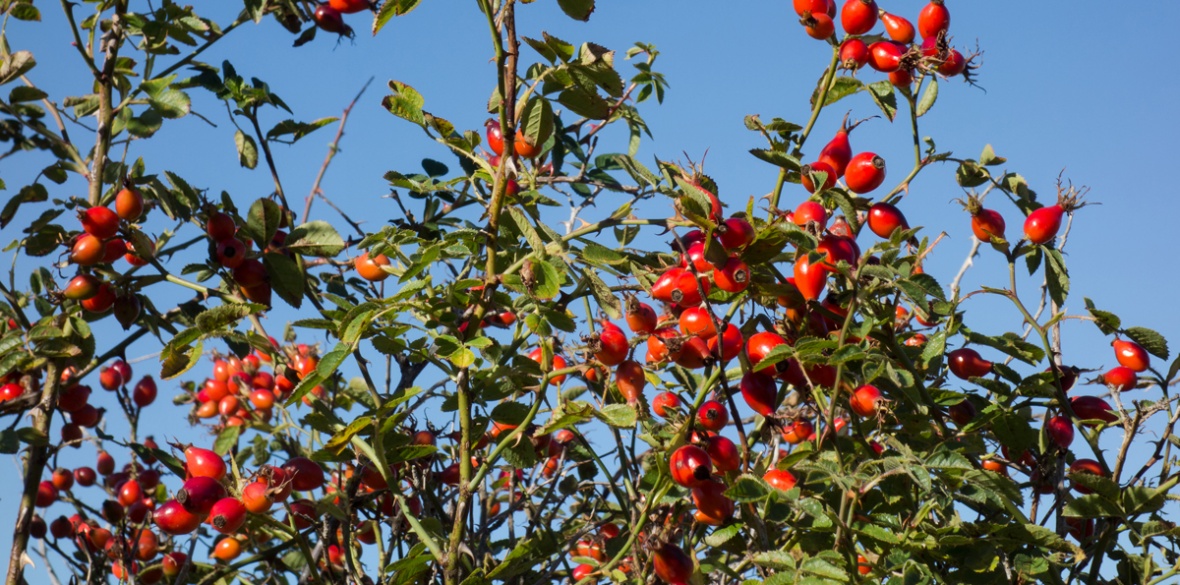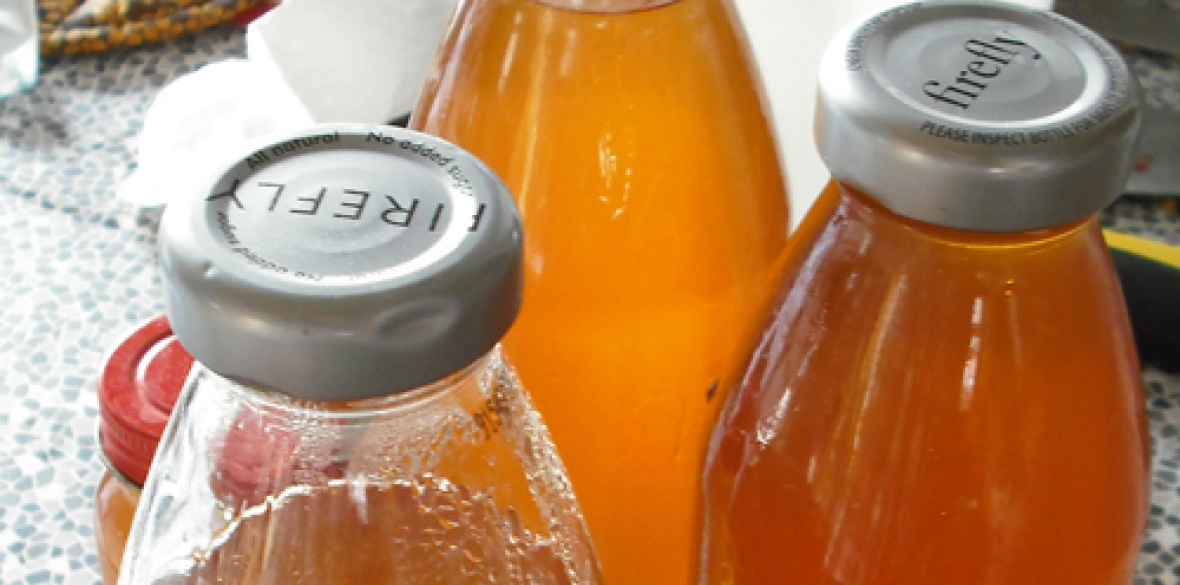This is the last article you can read this month
You can read more article this month
You can read more articles this month
Sorry your limit is up for this month
Reset on:
Please help support the Morning Star by subscribing here
This year marks the centenary of the merchant navy convoys that broke the U-boat stranglehold on transatlantic shipping in WWII.
The heroes of the merchant navy did a remarkable job, but it still needed other imaginative and resourceful work to ensure Britons got a healthy diet.
Growing children and their parents needed vitamins, particularly vitamin C, but importing fruit and orange juice would take up valuable shipping space.
In came rose hips that grew in every British hedgerow, had more vitamin C than orange juice and, by 1943, 500 tons of it were collected each year, enough to make 2.5 million bottles of syrup and save the importation of 25 million oranges.
Rosehip syrup was sold commercially in Britain after the war by a company called Scott and Turner of Wallsend near Newcastle which had invented Andrews Liver Salts. They bought the hips from local children and called their rose hip syrup Delrosa.
The children were paid 3d (about 35p today) per lb of rose hips harvested in the autumn. For many years after the war Delrosa Rosehip Syrup was supplied, along with national health orange juice, for babies, through baby clinics throughout Britain.
Rose hips were just one of an amazing 80 species of wild hedgerow plants used to protect the health of our nation during both world wars.
Before WWI German pharmaceutical companies had dominated both European and British drug markets, so large teams of volunteers were galvanised to forage and grow huge quantities of plant material from which drugs, medicines and other useful products were extracted.
Boy scouts, girl guides, women’s institutes and even schoolchildren were mobilised into action, doing their bit for the war effort. In WWII the government established a vegetable drugs committee which in turn established 70 county herb committees along with 250 drying centres all across Britain.
It also published a helpful little leaflet — No 5 in a series — called Hedgerow Harvest that had lots of recipes for vitamin-rich dishes that could be prepared from wild foods gathered in the countryside.
The extremely poisonous, deadly nightshade might seem an unlikely candidate to be gathered for the war effort — after all half a shiny black berry can kill a child but, in fact, this relative of the humble potato contains many useful if toxic compounds including atropine and hyoscyamine.
Atropine was in high demand for eye operations, so 200 tons of nightshade leaves and roots were harvested during WWII.
Another extract from nightshade was atropine sulphate and this proved an effective antidote to nerve gas attack and, amazingly, it is still used in gas attacks in modern battlefields such as Syria.
A rare and exotic plant called black horehound (Ballota nigra) was known to contain diterpenoids chemicals including marrubiin and ballonigrin. It was collected and used as a treatment for spasms and intestinal worm infections.
One of our commonest wildflowers, the foxglove contains a powerful compound called digitalin that acts on heart muscle. It can help to strengthen and regulate an arrhythmic heart, slowing it down and preventing atrial fibrillation.
In 1941, Oxfordshire women’s institutes alone sent enough foxglove plant material to their local processing plant in Islip to produce 350,000 doses of digitalin.
In WWI sphagnum moss was used in wound dressings, replacing imported cotton wool — it absorbs 20-times its own weight of water or blood. Its naturally acidity inhibits bacterial growth and helps prevent infection.
Hikers and holiday makers went moss collecting in the bogs of Scotland and English peatlands like Dartmoor and, as a result, a million dressings a month were sent to military hospitals around the world by the end of the war.
Nettles (Urtica dioica) were collected for their chlorophyll which was extracted and used in the synthesis of anti-asthma drugs. They also yielded a green dye used for camouflage.
Britain has a number of species of poppy that grow wild. All have traditionally been used to ward off colds and fevers. The morphine poppy, (Papaver somniferum) grows in the wild all over the country but mainly in the southern and eastern counties. It had escaped from cultivation or has been introduced and become naturalised.
In the war it was gathered and cultivated and the distinctive seed heads were milked for the latex that, although containing less active morphine than in poppies grown in hotter climes, still gives a useful amount of the pain killer drug.
Large quantities of meadow saffron (Colchicum autumnale) bulbs were collected to provide the drug colchicines, which was used to reduce inflammation.
This is a close relative but a different plant from the spice saffron that was once cultivated in places like Saffron Walden. A dozen tons of bulbs were needed in WWII and collectors were instructed to gather them from pastures and meadows before these were ploughed up to grow crops.
Finally, who would believe that conkers, the beautiful fruit of horse chestnuts, were used in WWI to manufacture the explosives nitroglycerin and nitrocellulose.
Schoolchildren and boy scouts were put to work collecting them, but the use of their bounty was kept a top secret. Perhaps the youngsters thought that they would be threaded on strings to attack the Germans.
In 1917, 3,000 tons of them were collected and sent to the Synthetic Products Company in Kings Lynn.












